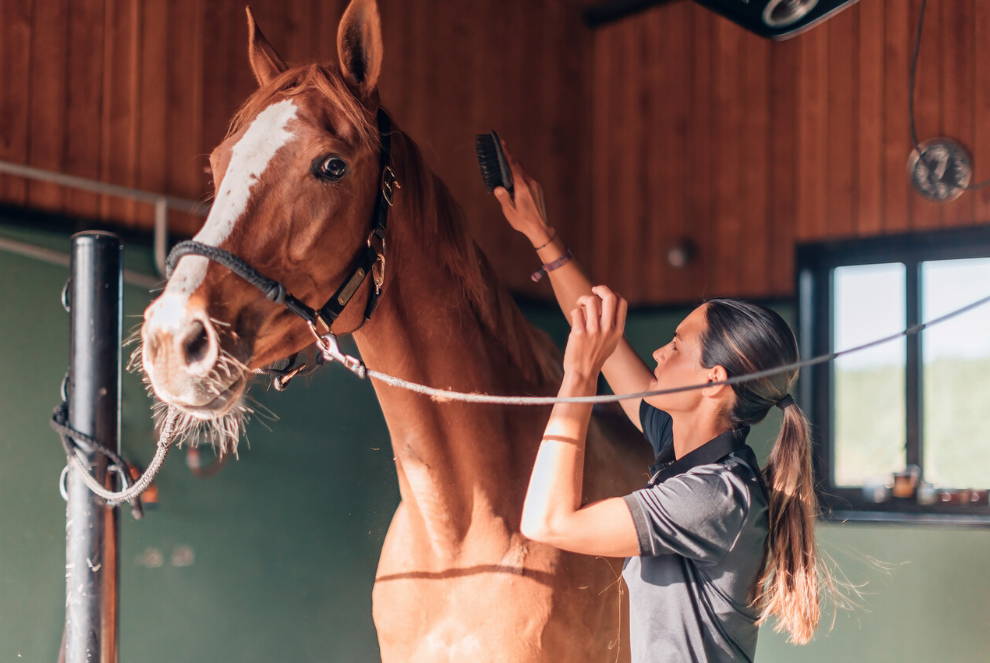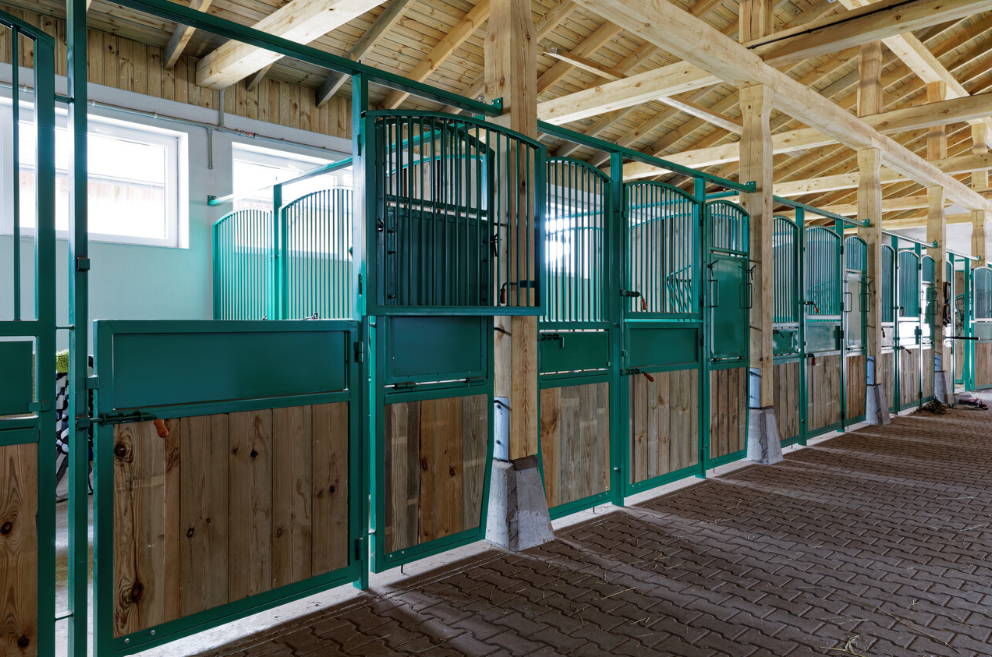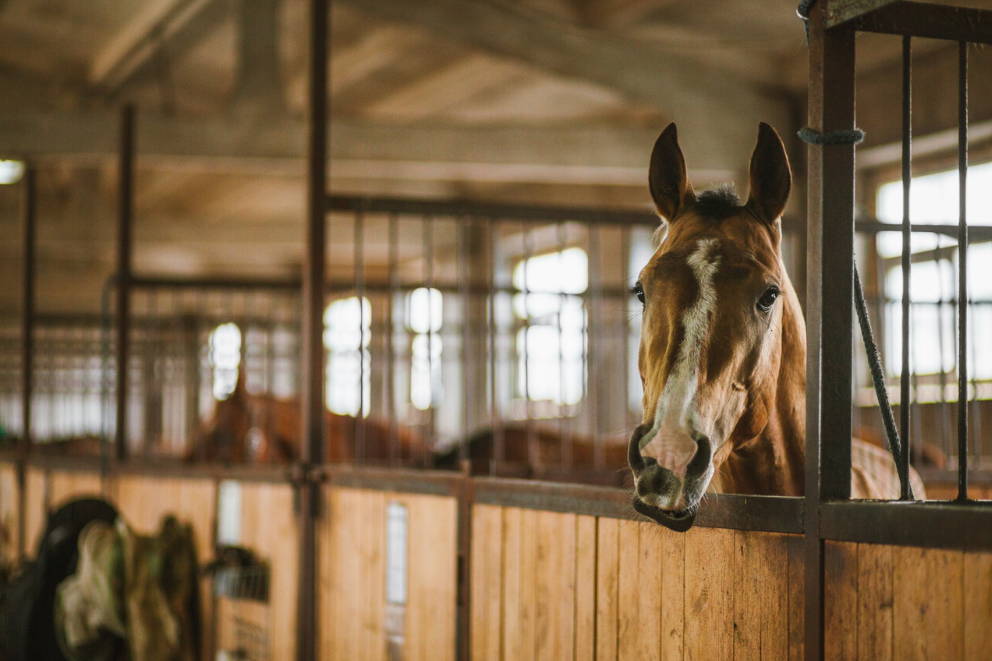Barn Upgrades for Horse Health
Richard III’s Shakespearean battlefield cry, “A horse, a horse. My kingdom for a horse” has come to describe that one essential thing in a given situation.
Fresh, circulating air is the essential veterinarians urge when planning barn upgrades that most affect our horse’s health and well-being. Designs and management strategies to reduce airborne dust and ammonia go hand-in-hand with prioritizing ventilation.
Minimizing injury risks and a suitable place for the veterinarian and other care providers to help your horse rank highly, too.
Ventilation
Even the most meticulously kept stable is loaded with tiny, respirable particles that impact our horse’s vulnerable respiratory system. Forage is the healthiest diet foundation for most horses, but it’s also one of the biggest sources of these invisible bits of organic matter that trigger irritation and inflammation in the respiratory tract.
Traditional bedding is right up there with hay as a source of organic dust. Ammonia is another inescapable element in the stable and it’s harmful – for your horse and for you.
Whatever the airborne particles consist of, ventilation keeps them moving along rather than settling in the horse’s breathing zone.
If you are building new, you’d want to maximize natural breezes by positioning the barn and the breezeways in their predominant path. You’d make those aisleways wide – ideally, at least 14’ -- to maximize airflow intake and choose ceiling heights and air exits to harness the tendency of warm air to rise.
Installing more windows and/or doors is your best option in barn remodels and upgrades.
The more places air can enter and exit, the better. Horses in stalls with two doors or windows, for example, benefit from living in an airflow corridor.
Shed row barns with stalls that open only onto the center aisle can be problematic, notes Wren Burnley, DVM of Northwest Tennessee Veterinary Services, in Dresden, TN. “Even if the center aisle is getting great ventilation, the ventilation can be very poor in the stall itself. Unless there’s a window facing the outside, they can’t be getting fresh air.”
Keep It Cool
“A lot of our barns like to keep a temperature that’s comfortable for ourselves, or maybe they want to keep things warm so their show horse doesn’t grow a heavy coat,” says Megan Snyder, VMD, of Damascus Equine Associates in Mount Airy, MD. “But that’s not good for horses’ lower airways. It’s better if we keep ourselves and our horses bundled up to keep air flowing.”
In Texas area’s hot climate, Beau Whitaker, DVM of Brazos Valley Equine Hospital in Salado, TX, finds spray foam insulation on the barn ceiling helpful with cooling in hot weather and retaining warmth in the cold months.

Fans
The tendency for warm air to rise, aka “thermal buoyancy,” is most powerful when there’s a big difference in the outside and inside air temperature. When it’s warm outside, it’s not so effective. Fans can help move air year-round and can be especially helpful during warm weather.
Choose fans built for outdoor use and with safety features that protect a curious horse from touching the blades. Position them out of your horse’s reach, connect them directly to a power circuit and consult with an electrician to ensure sufficient power and safe connections. Extension cords are generally not advised in the stable.
Ceiling fans are typically a good option. They are usually quieter than smaller, portable fans and – assuming a high ceiling – can be installed out of the horse’s reach.
Bust Dust
Limiting the amount of dust in our horses’ environment is veterinarians’ top recommendation for protecting their respiratory health. Hay storage, aisleway and flooring are among many choices that affect the quantity of respirable dust.
“I’ve had horses who are affected with respiratory problems just because hay was stored in the stall next to them or the aisleway outside their door,” notes Dr. Snyder. “And storing hay above where horses live is not ideal because the dust just falls down on them.”
Even though many of her clients think their hay is “not dusty,” she notes that “Hay is grown in the field and has its own natural dusts and molds that seem to really exacerbate a number of the respiratory cases that I manage.”
“A Haygain Hay Steamer is on the list of environmental changes we can make that help us manage respiratory cases,” Dr. Snyder continues. “There’s no cure for these diseases, so it’s all about management. We can use every medication and inhaler out there, but if we don’t change the management strategies, we’re not going to make headway.”
Low dust bedding is important in dust reduction, too. Cardboard bedding products have helped minimize dust in Dr. Snyder’s experience, whereas pelleted bedding emitted dust once it was stepped on and kicked around.
Flooring Factors
“Flooring that’s comfortable for the horse to stand and lay on is the first consideration,” notes Dr. Whitaker. “There are a lot of matting and synthetic options now.”
Whatever the flooring, proper drainage is critical to reducing buildup of harmful ammonia in the barn. “We have wooden boards in the floor, with shavings on top and road base and pea gravel underneath that. The urine filters down through that and it really keeps the ammonia smell down.”
Single-piece flooring systems that seal to the stall wall prevent urine seepage and accumulation. So long as bedding is sufficient to absorb urine, it can be easily removed during regular stall cleaning to greatly reduce the ammonia build-up.
ComfortStall Sealed Orthopedic Flooring is an ideal option in this category. Its medical grade foam provides ample, built-in cushion for comfort. Only enough bedding to absorb and remove urine is needed, which reduces dust and labor. And urine can’t seep through to the subfloor and accumulate harmful ammonia build-up.
Out, Damned Ammonia. Out!
While some of us consider a powerful ammonia smell a normal part of the barn life, it’s actually very unhealthy for horses and humans.
The ammonia smell comes from “urea,” which is a byproduct of digestion and metabolism of protein in the horse’s diet. The more protein they consume, the more urea produced.
Exposure levels of 220 ppm (particles per million) for 10-30 minutes is enough to irritate the respiratory tract, eyes and nose. In the stall environment, concentrations of 80 to 450 ppm are found within 12” of the floor. Unfortunately, that’s where our horses’ noses are for several hours of the day.
Irritation occurs at lower concentrations when prolonged. In general, if you can smell ammonia, it's already at a level that’s harmful for your horse and for you.
Safe Spaces for Horses & Humans
A safe space for rehabbing horses is something Dr. Burnley recommends from personal experience. At her home barn in Fulton, MO, she built an approximately 60’ x 40’ paddock in an “L” configuration. The shape allows horses to move around outdoors but prevents full-on gallops possible in bigger turn-outs. “In the sporthorse world, it’s amazing how often you need a turn-out place that is small and safe. Where you can encourage them to walk, but not to run, run, run…”

Dr. Burnley chose a crushed stone footing. It’s good for horses that can’t be turned out on grass and it doesn’t get muddy, which can be hard on hoof health.
Veterinarians also recommend and appreciate a safe space to work on your horse. Dr. Burnley requires clients to have a set of stocks when doing reproductive work, to protect against getting kicked.
Cross-ties are another option and the space should be easily cleanable. “It’s nice to have a concrete floor with mats, especially so there’s no dirt around if we’re doing joint injections,” Dr. Whitaker notes.
Think Injury Reduction
Horses are masters at injuring themselves. Anything sharp or protruding into their environment, or within their curious clutch, should be as horse-proof as possible and checked regularly. Door latches that slide back into place, bucket holders that won’t snag an eyelid or lip and stall walls that won’t trap the hoof of a rolling horse are on the long list of considerations.
A little bit of forethought, with your horse’s health at the forefront, goes a long way in the barn upgrade process.





















